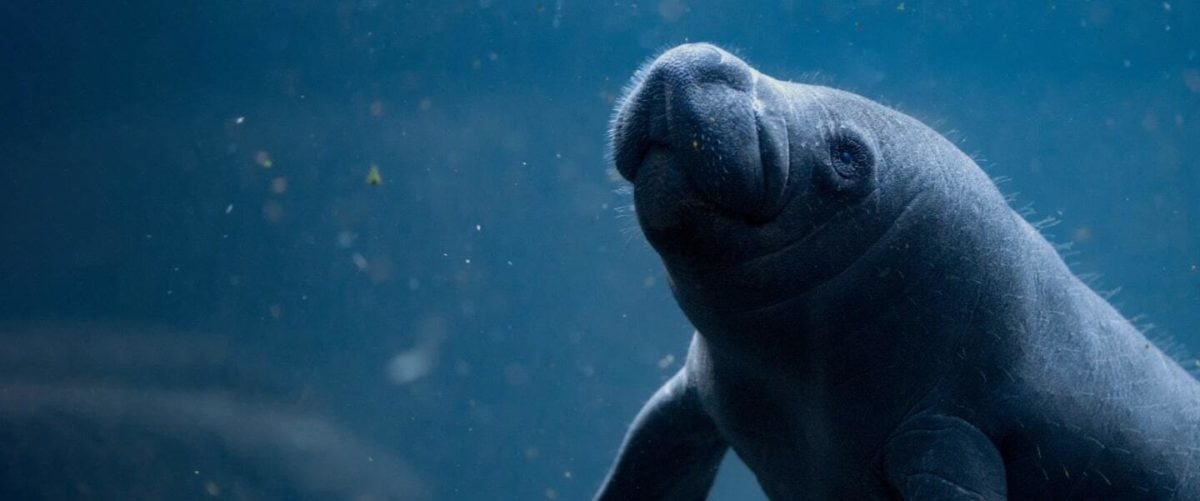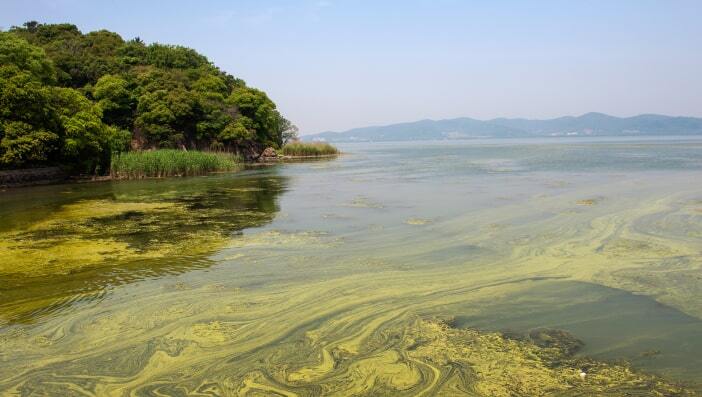Florida’s Manatees Are Starving to Death. Big Ag and Big Oil Are Behind It.
Published May 5, 2022

Florida manatees are dying at record rates. By fighting Big Oil and Big Ag, we make the planet safer for all, including Florida’s lovable sea creatures.
Florida’s manatees have swum into the spotlight since wildlife officials launched a program to feed them almost 200,000 pounds of lettuce. The manatees have eaten “every scrap” they’ve been given, one official remarked, since the program kicked off in January.
But the feeding program has a darker side, too. Its purpose is to address record levels of manatee deaths, primarily from starvation. And what may seem like the natural, albeit heartbreaking, cycle of life is actually an “unusual mortality event.” Such events are defined by the National Oceanic Atmospheric Administration as a sudden, significant die-off demanding quick response. And we can trace the sudden deaths of Florida manatees to agricultural pollution and climate change. The crisis underscores the urgent need to take action against Big Ag and Big Oil.
A Record-Breaking 1,100 Manatees Died in 2021, and There’s No End in Sight
Florida manatees have rebounded from the numbers that put them on the endangered species list in the 1990s. However, scientists and wildlife advocates continue to raise the alarm about the sea creatures’ lingering vulnerability. In 2021, that alarm came to a panicked roar. Manatee deaths nearly doubled from the previous year and blew past the previous record by over 200 deaths.
In the first few months of 2022, 488 deaths have already been recorded. This pace is unsustainable. Manatees’ natural lifespan is over 60 years. Yet, only half of those who reach maturity are expected to reach their twenties due to current high mortality rates. If we continue along our path of increased pollution and warming, the threat of extinction will rise.
Big Ag Is Killing Off Manatee Food Sources and Worsening Deadly Red Tide Outbreaks
Manatees need a lot of food to survive. In the wild, they consume 10 to 15 percent of their body weight daily. Predominantly herbivores, their food sources are different types of aquatic vegetation, largely seagrasses. These grasses are sensitive, requiring light and clean water to flourish.
Big Ag is disrupting this delicate balance, as agricultural runoff flows into waterways and pollutes them. Fertilizers contain high levels of phosphorus and nitrogen, contributing to massive algal blooms on the water’s surface. This process, known as eutrophication, blocks the needed sunlight from reaching seagrasses and depletes oxygen, creating dead zones.

Since 2009, over half of the seagrass in Florida’s Indian River Lagoon has vanished. Some areas have seen losses up to 95 percent. The lagoon is a historic gathering place for manatees fleeing cold weather. In recent years, though, the loss of seagrass is starving them out.
Not only are manatees losing their food source, but polluted water adds another layer of danger. Red tides, a type of algae bloom, can be deadly for manatees. Since they must surface to breathe, manatee constantly inhale red tide toxins, which can cause neurological and respiratory damage. Sometimes, a single inhale is enough to kill a manatee. While red tides can occur naturally, high nutrient counts exacerbate the size, concentration, and duration of these outbreaks. The outbreaks, compounded by pesticide-filled waters, are deteriorating manatee immune systems.
Big Oil-Induced Climate Change Exacerbates the Crisis
It isn’t only Big Ag posing threats. The oil industry’s crusade to entrench fossil fuels will have a catastrophic effect on manatee populations. With 2°C of warming, the Everglades will be submerged by the sea, and the saltwater will further decimate seagrass growth.
As waters warm, manatees are moving further and further north, introducing unfamiliar boats and people as new threats. The expanding range draws them away from safe breeding grounds, leaving them stranded when temperatures drop. Warmer waters will also encourage even more red tide blooms.
Climate change also threatens all marine wildlife with increased extreme weather events, new diseases, ocean acidification, and more. The list goes on and on, but none of it bodes well for the manatees.
We Need Large-Scale Shifts Away From Factory Farming and Fossil Fuels Before It’s Too Late
Temporary feedings are only a stopgap. Regrowing aquatic vegetation is an essential start, but that progress won’t matter if pollution and climate change continue unabated. As Florida’s official state marine mammal, manatees are deeply loved by locals and tourists alike. Their plight is a reminder that Big Ag and Big Oil threatens everyone, on land and in the sea.
Knowing is half the battle. Will you share this with your friends?
Enjoyed this article?
Sign up for updates.
TO TOP


